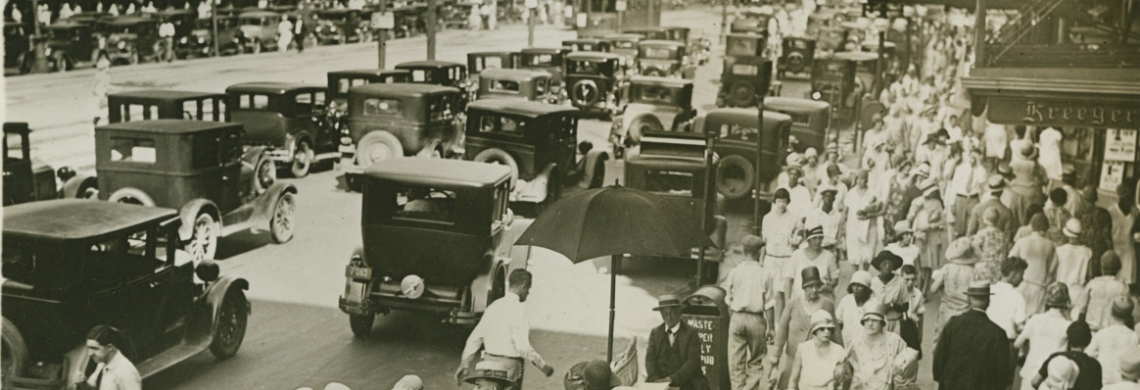“The funeral of John Barleycorn promises to be the largest mortuary function in the history of New Orleans” mused the Times-Picayune on June 30, 1919, the day before the prohibition of hard liquor took place.
Hotels were packed with visitors from nearby dry states; restaurants and cabarets braced for record crowds; and jazz music was banned by the police. Although throngs of people filled downtown streets, the public party was tamer than anticipated. Thus New Orleans slid quietly into the dry and roaring twenties.
The 18th Amendment made illegal the manufacture, transport, and sale of alcohol for drinking purposes in the United States. It was proposed to Congress in 1917 and became law on January 16, 1920, though practical enforcement began in the preceding months.
Legal sales of beer and wine continued on a limited basis until October 28, 1919, when the passage of the Volstead Act gave police power to Prohibition and defined intoxicating liquor as anything with an alcohol content over 0.5 percent. The Times-Picayune, in an article signed by “A. Souse,” mourned that “Gloom, Deep Dark And Dismal, Descends As Drought Comes…dig out the sackcloth and ashes, get on the wagon, welcome Old Man Gloom and pretend you like it.”
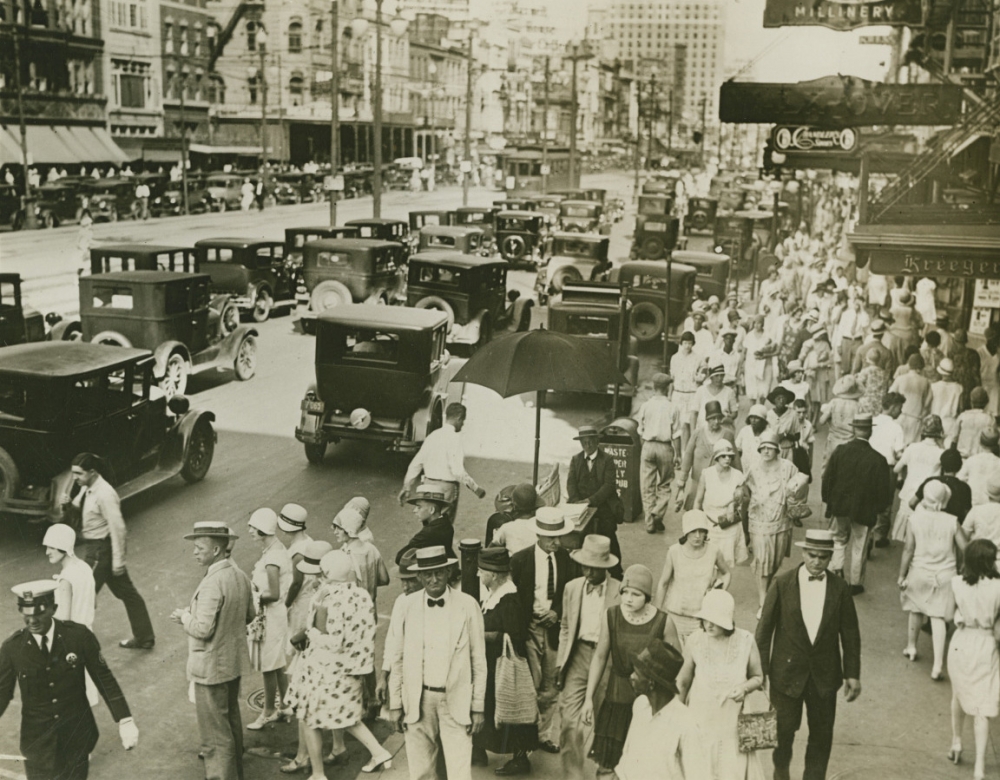
Street scene from the late 1920's showing Canal Street clogged with pedestrians and automobiles. (THNOC, 1978.94.5)
When the 18th Amendment finally went into effect, the event was anticlimactic. The New Orleans Item reported that private celebrations were planned, but because of the Volstead Act, they “will be more subdued than the famous death watch of June 30.”
The city proved itself loath to giving up old habits.
Although liquor manufactured before Prohibition could be legally consumed at home, all newly produced alcohol was illegal, and in New Orleans supplies were easy enough to come by. Foreign liquor was smuggled into the city, at first via Lake Pontchartrain and then through St. Bernard Parish, where rum-running became a way of life for many people. Hordes of New Orleanians made their own home brew, and as early as 1920 it was estimated that 10,000 of them had already broken the law. Newspaper reporters openly chilled their beer in the city morgue. Artist William Spratling bought 10 large jugs of absinthe from a bootlegger, and he and his friends drank it in great quantities. Elizabeth Anderson—wife of writer Sherwood Anderson—said of their crowd, “We all seemed to feel that Prohibition was a personal affront and that we had a moral duty to undermine it.”
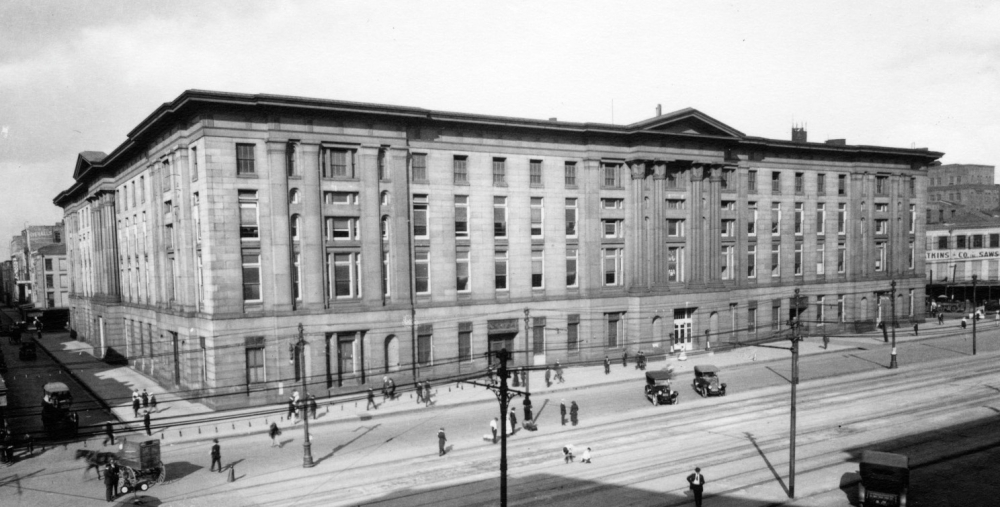
Federal dry agents were based out of the U.S. Custom House on Canal Street, though the force was always too small to enforce the law adequately in New Orleans. (The Charles L. Franck Studio Collection at THNOC, 1979.325.1161)
Initially barkeepers were cautious, but in 1920 the Item said “A Wink Will Get You a Drink If You’re Known to the ‘House.’” Traditional saloons were soon replaced by “soft drink stands,” which sold home brew to poorer customers, and by more exclusive “speakeasies.” These were not always very secret. There were speakeasies in downtown office buildings, and there was an automobile that served drinks at curbside along downtown streets. In some restaurants waiters sold drinks from hip flasks, while in others “small blacks”—straight liquor in demitasses with mixers on the side—were served.
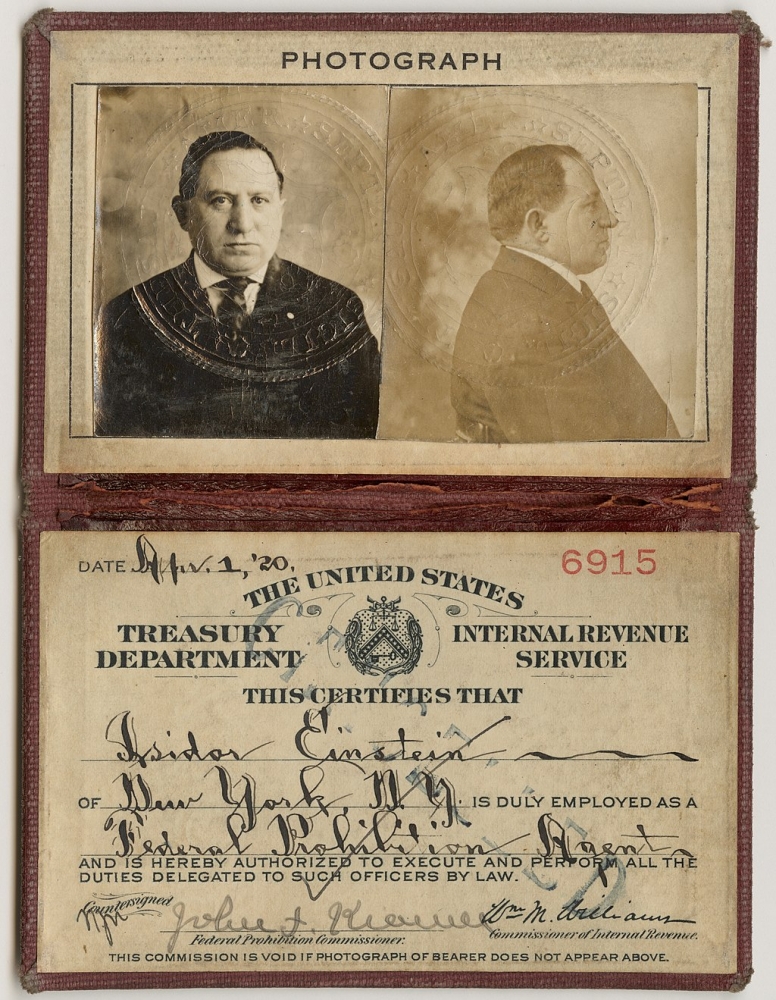
The responsibility of seeking out violators fell to federal dry agents who were based at the U.S. Custom House. The force was always too small to enforce the law adequately in New Orleans.
One of America’s most famous agents was Izzy Einstein (right). A master of disguise—and followed by the press like a movie star—he came to New Orleans in 1923 as part of a nationwide investigation to learn where drinks were the easiest to find. New Orleans won with a score of 35 seconds. Between the railroad station and his hotel, Izzy asked his taxi driver where drinks were sold. The driver offered to sell him a bottle from under the seat.
Raids, which were usually conducted around major holidays, were a part of life. The small home brewers were too numerous so were rarely bothered, but restaurants, clubs, cabarets, and bars were often harassed. In 1924 the Boston Club was raided, and while there were no arrests, 100 bottles of very fine illegal liquor were confiscated. The most notable raids were those against supply houses, commercial stills, and big breweries where legal “near beer” was sometimes made much stronger. In 1920 one company was raided for openly selling malt, hops, and home-brew kits. The first big raids occurred in 1921 when six breweries were fined a total of $100,000 for producing real beer. Ironically, one hard-liquor bootlegger was pleased with the brewery raids, telling the Times-Picayune that “beer consumption almost ruined us. We lost customers…and whiskey prices dropped to scandalous levels.”
The Hood Act, Louisiana’s prohibition enforcement law, obliged local police to assist federal agents. In New Orleans this assistance was only half-hearted. Police officers were little motivated to make arrests, and there were even instances of police moonshiners, as well as those who acted as lookouts for smugglers.
New Orleans was one of the nation’s most important alcohol distribution centers, and it was dubbed by some agents the “liquor capital of America.” On August 11, 1925, the “clean-up of New Orleans” took place when 200 out-of-town agents staged a series of sensational raids that were among the most important in the history of Prohibition. The agents uncovered 10,000 cases of liquor, and some said they had never seen so much alcohol, even before Prohibition. There was still so much hidden liquor in New Orleans that one bootlegger scoffed at the haul, telling the Times-Picayune that the agents “didn't get such an awful amount. I don't believe the price of liquor in New Orleans will go up much.”
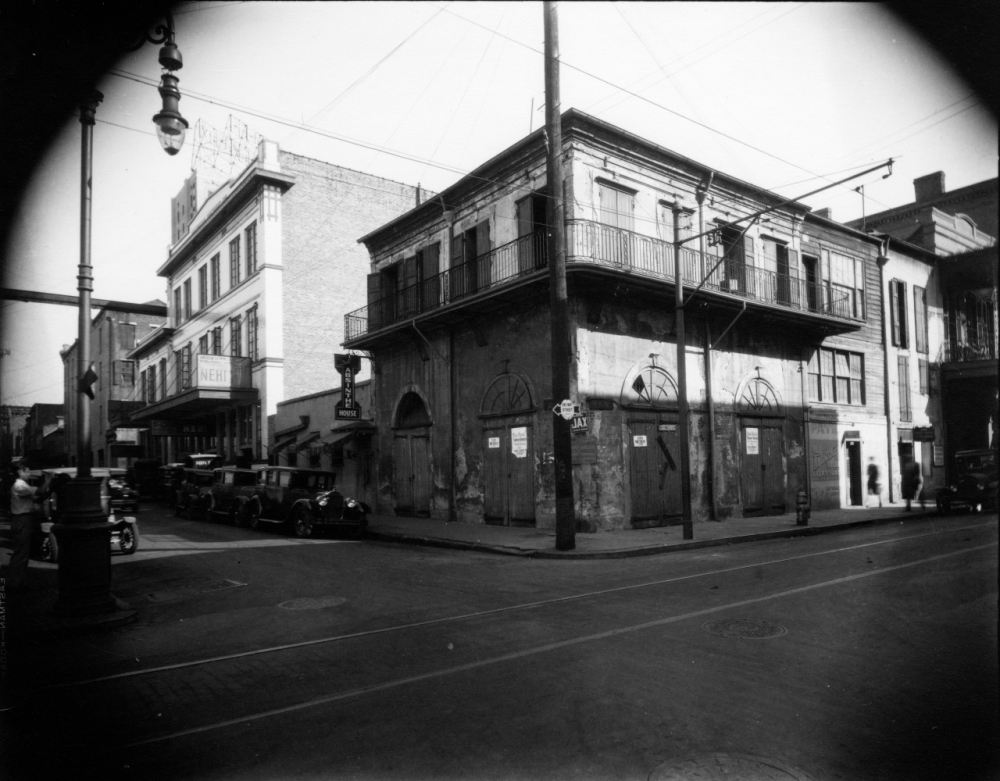
The Old Absinthe House on Bourbon Street, sometime after its padlocking by federal dry agents. (The Charles L. Franck Studio Collection at THNOC, 1979.325.2012)
After the raids, the Times-Picayune warned that “The ‘be careful’ went out last night along the Tango Belt,” referring to a cluster of venues centered upon Iberville Street in the French Quarter, as only “safe” customers were served by bartenders. The new slogan of the dry agents was “Let’s close ’em up by New Years,” and on December 10, 1926, the Item reported that 86 establishments had been closed. In 1927 New Orleans had more padlocked “speakeasies” than any other city in the nation; home drinking became more the norm, as open saloons were fast disappearing.
Prior to the raids, smuggled foreign brands were readily available and safe for consumption. By 1928, due to the vigilance of the Coast Guard and customs agents, most liquor was moonshine, which was often unsanitary and even lethal.
At noon on April 13, 1933, beverages containing 3.2 percent alcohol were legalized by Congress. The Times-Picayune reported, “New Orleans can have a jubilant legal whoopee party...the skyscrapers will be a-rocking and a-reeling before midnight.” There were 911 retail beer permits issued in the city within a few days; restaurants became beer gardens, and hotel bars reopened. Everyone waited with great restraint until noon when sirens wailed and crowds cheered. Convoys of beer trucks stretched for blocks, Canal Street was thronged with merrymakers, and 488,000 gallons of beer were sold in a few hours. The Times-Picayune stated that “there had not been so spontaneous an outpouring of joyous citizenry since the Armistice.”
The 21st amendment, which repealed Prohibition, went into effect on December 5, 1933, and hard liquor was again available. There was no whistle blowing or hilarious display, since, as one barkeeper told the Times-Picayune, “we’ve been selling everything for the past few weeks, why should anyone get excited over official repeal?”
Still, some New Orleanians welcomed the return to hard drink with customary fanfare. “For the first time in the past 13 years,” the Times-Picayune reported, “the lights were turned out in one of the city’s leading French restaurants as café bruleau [sic] was prepared before an admiring group of patrons.”
A version of this article originally appeared in the Summer 1988 edition of The Historic New Orleans Collection Quarterly.

